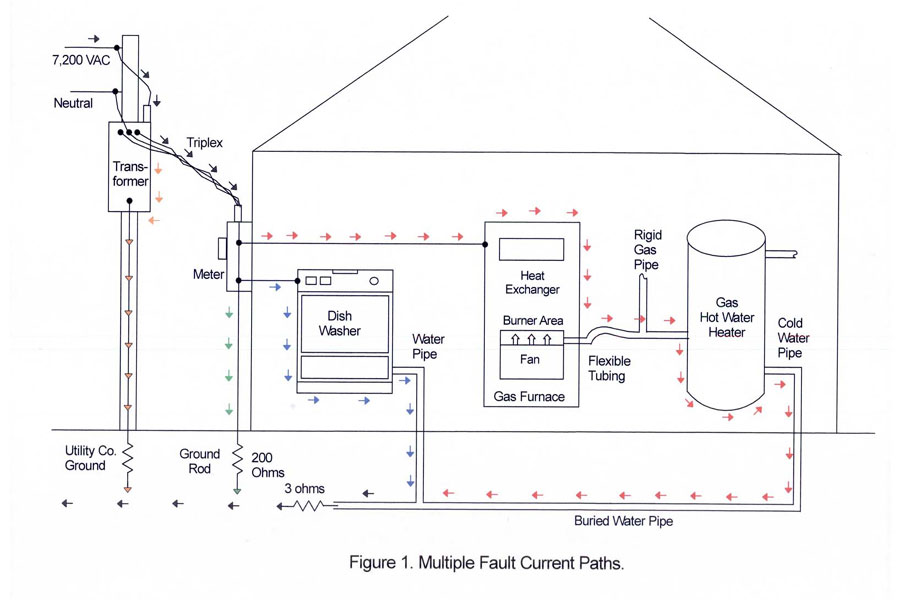
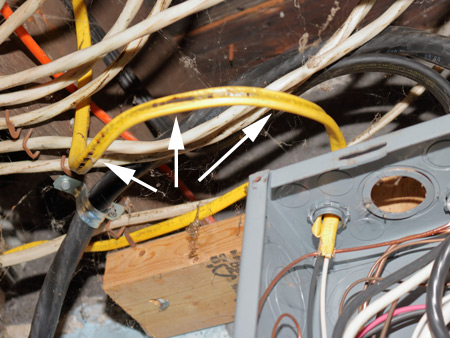
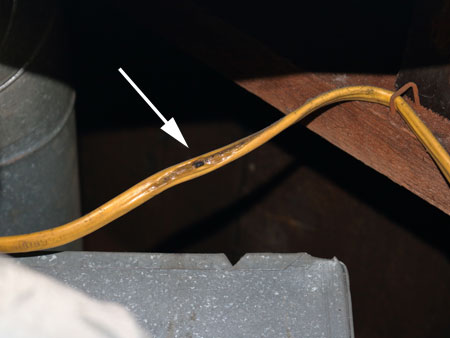
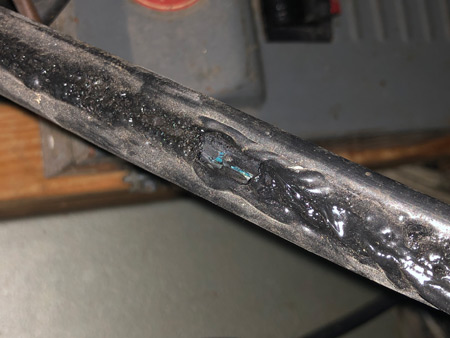
This home was undergoing extensive renovation. Shortly after the electrician's helpers cut the live service drop lines, a small fire was discovered in the attic furnace. Although the helpers did not admit it, a live 120-volt conductor brushed against the neutral conductor. Electrical current flowed into the home through the neutral and the equipment grounding conductor, which energized the metal frame of the gas furnace and the frames of other appliances in the home. Per the NEC, the gas piping was bonded to the home's electrical ground. The flexible gas connector at the furnace was touching the knockout hole that it passed through. This allowed electrical fault current to flow through the flexible gas connector, through the rigid gas piping, into the earth and back to the neutral at the transformer. Electrical arcing melted a hole in the flexible gas piping and ignited the escaping gas.
There was no other electrical damage to this house.
The house immediately behind this house was powered by the same transformer. There was no electrical damage to this house.
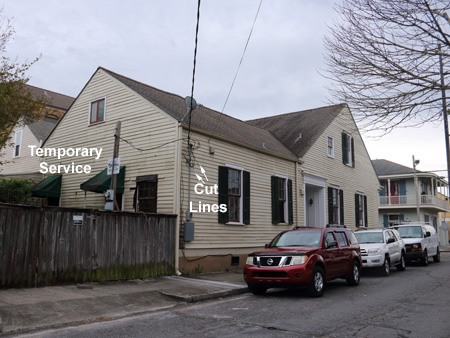
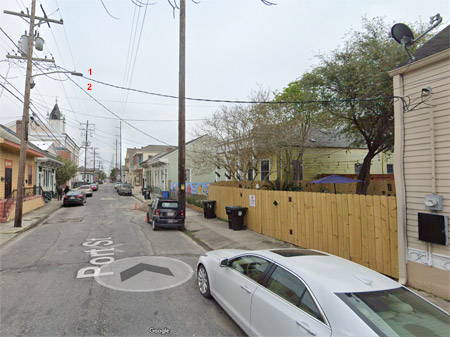
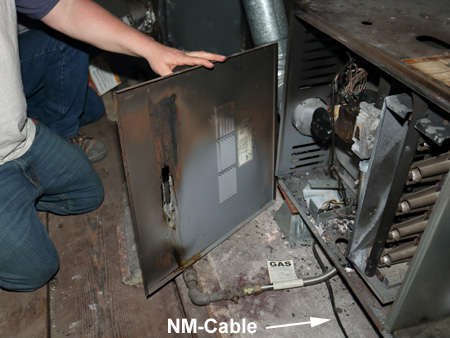

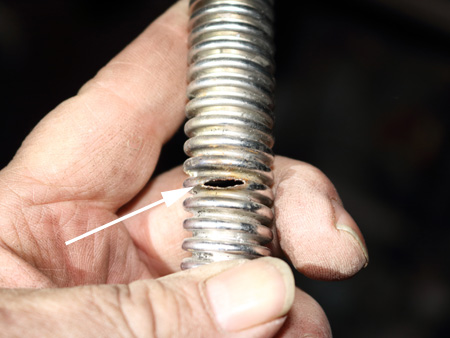
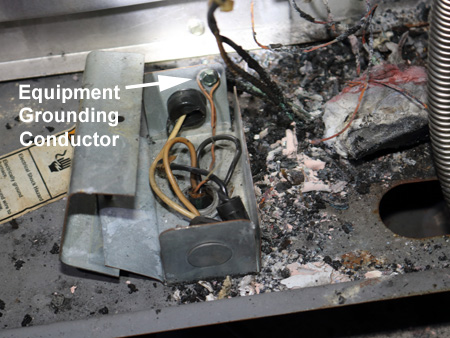
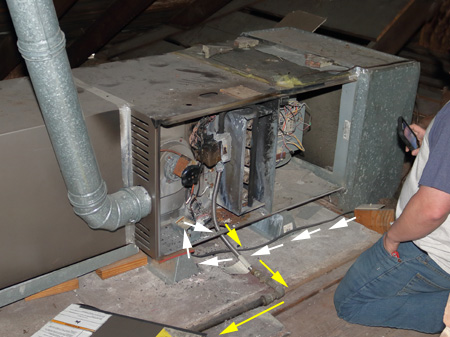
This home was purchased on 8/26/2016 and an attic fire occurred three days later on 8/29/2016. The owner had not moved in. The electrical service was scheduled to be cut on 9/1/2016. The gas company did not bother cutting off the gas from the previous owner.
The distribution transformer was located in a neighbor's back yard. It supplied electricity to three homes. Between the time that the home was purchased and the fire, a tree fell across one of the neighbors service drop lines. This caused the service drop lines of the other two homes to move. There were two splices in the service drop lines where the home caught fire. The neutral was pulled out of the splice closes to the transformer. At the other splice, the electrical tape was damaged and one of the energized splices was touching the uninsulated neutral splices. That is, 11 days after the fire, when I inspected the home, the neutral was still energized.
Without going through a circuit breaker, electricity came into this home through the neutral. It traveled through the equipment grounding conductor to the furnace. It went through the flexible gas connector, to ridge black pipe, through the earth, and back to transformer. The weakest link was the flexible gas connector. It was only 10 mils (1/100 inch) thick. The flexible gas connect was severed. There was no other electrical damage to this home.
There was no electrical damage to the other two homes.
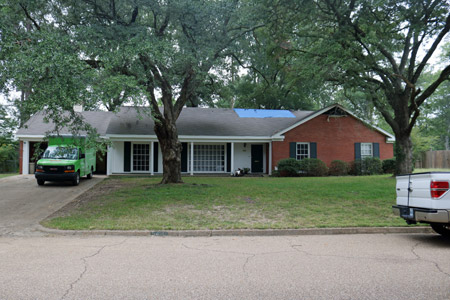
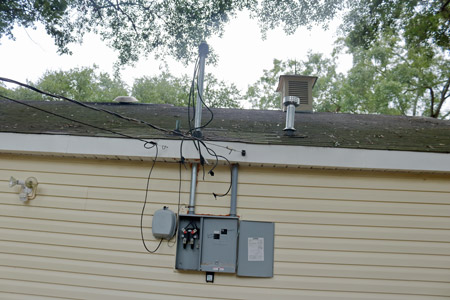
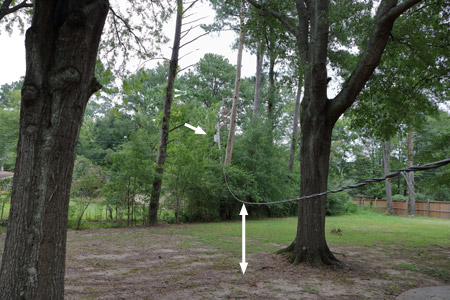


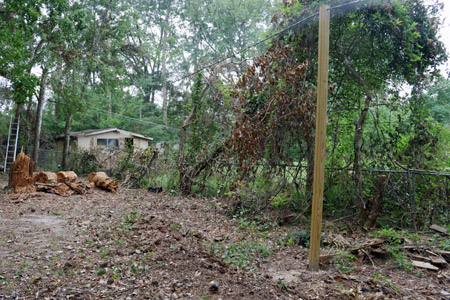
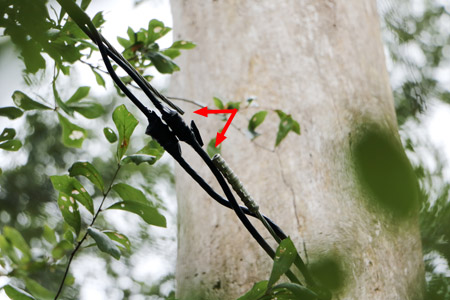
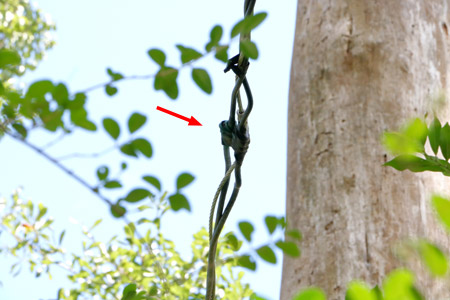
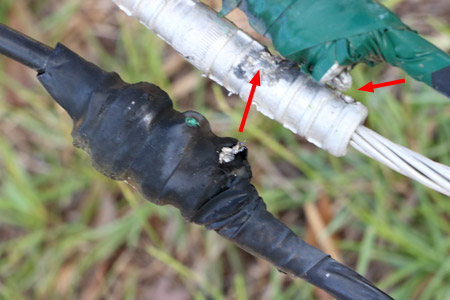
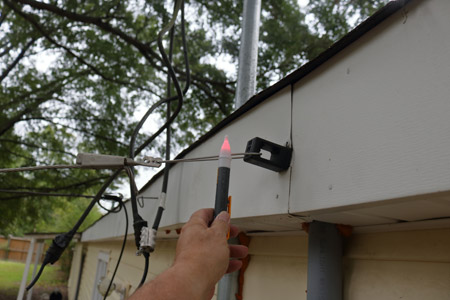
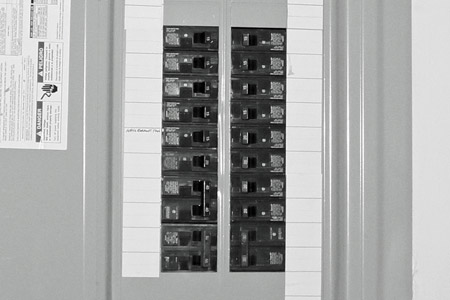
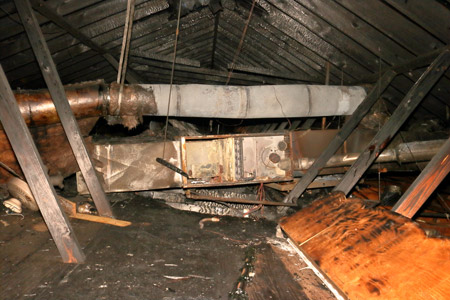
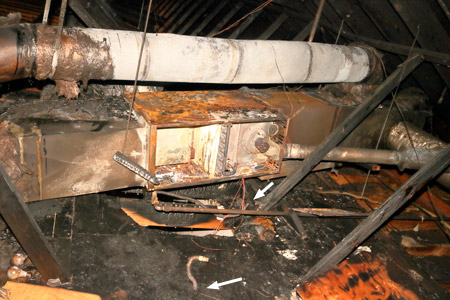
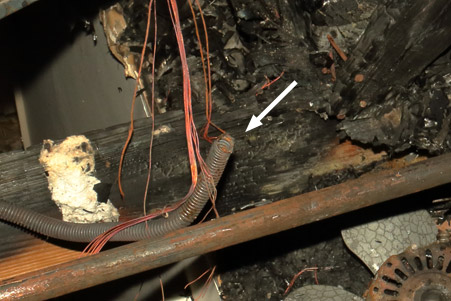
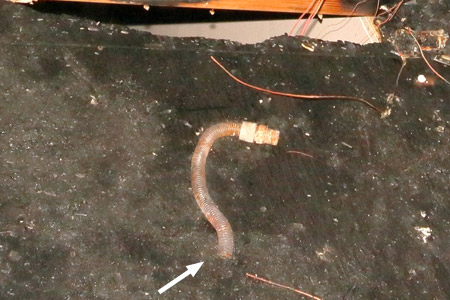
The homeowners were awakened by a fire in a hall closet that contained a gas furnace and a gas hot water heater. To depart the home, they cut on the hall light; the bulb blew. When they cut on the kitchen light, the glass shattered. The local fire department extinguished the fire. The fire was contained to the furnace closet and the immediate attic above the closet.
The service company hired to clean up the water damage needed electricity for their fans and dehumidifiers. An electrician examined the wires in the attic. He observed that almost the entire lengths of both the Romex-type cable to the furnace and the cable to the dishwasher had overheated from the inside to the outside. There were sections on both cables where the outer jacket of the cable was burned on the inside, but the wire insulation on both the hot and neutral conductors was in excellent condition. The circuit breakers to the furnace and the dishwasher did not trip.
When the electrician attempted to provide temporary power to home, he discovered an open neutral. The electric utility company replaced the distribution transformer. The distribution transformer was located in the homeowner's backyard. Two days before this fire, the fuse protecting the transformer blew. A dead squirrel was found on the ground below the transformer. After the fire, the homeowners noticed that the vegetation on the transformer pole had been trimmed. The electric utility company was put on notice. After this, but before the joint inspection, they moved the transformer from the backyard to the street.
The homeowner's insurance company hired a competent Certified Fire Investigator with over 25 years of experience. When he arrived on scene, restoration work was underway. The gas hot water heater had been removed from the closet, and some power to the home had been restored. He determined that the fire started at the corrugated steel flexible gas appliance tubing that connected the furnace to the rigid gas pipe. After talking to the electrician, the fire investigator stopped all restoration work, and he hired me to investigate the electrical.
I hypothesized that the utility company's neutral became energized, and that there existed an electrical path from the utility company's neutral through the dishwasher's grounding conductor to earth-ground and another electrical path from the utility company's netural through furnace's grounding conductor to earth-ground. Per the National Electrical Code (NEC), the utility company's neutral is connected to the grounding conductor bus in the main panel box. These paths do not pass through a circuit breaker. This would explain the damage to the Romex-type cables.
To prove this hypothesis, an AEMC, Model 3711, clamp-on ground-resistance meter was used. From the dishwasher's grounding conductor to earth-ground, the resistance was 2.9 ohms. The dishwasher was pulled out its cabinet. The safety grounding conductor was connected to the metal frame of the dishwasher. Also, connected to the metal frame was the dishwasher's metallic inlet water pipe. Connected to the dishwasher's inlet water pipe was a copper water line. The other end of the copper line was connected to a steel water pipe protruding through the concrete slap.
Because of the restoration work in the furnace closet, the resistance from the furnace's grounding conductor to earth-ground could not be directly measured. This had to be done piecemeal. A Fluke multimeter was used to establish electrical continuity from the furnace's grounding conductor through the metallic flexible appliance tubing to the rigid gas pipe. Next, continuity was established from the rigid gas pipe through the hot water heater to the inlet cold water pipe. Finally, the AEMC meter was used to measure the resistance from to the supply water pipe to earth-ground. It was 3.0 ohms. Thus, the existence of the second hypothesized path was proven.
The fault current paths are depicted in Figure 1. There are two paths inside the home and at least two paths outside the home.
Typically, the voltage of the distribution line with respect to the neutral is between 7,200 and 7,900 VAC. If the neutral becomes energized at this voltage level, electricity can jump or arc a distance of approximately 1/10 of an inch through air.
This home was more susceptible to an energized neutral because it was not properly grounded. The first time, I measured the earth-resistance at the service entrance ground-rod, it was 220 ohms. After the distribution transformer was moved from the homeowner's backyard to the street, I measured 176 ohms. The NEC requires this resistance to be less than 25 ohms or a second grounding electrode must be installed.
It is my opinion that utility company's neutral became energized, and this caused electrical current to flow through the metallic corrugated flexible appliance tubing at the gas furnace. This resulted in electrical arcing that penetrated the thin corrugated steel tubing and ignited the gas.
If the utility company's neutral had not become energized, this fire would not have occured. The electric utility company reimbursed the homeowner's insurance company, the full cost for damages to this home.
An energized neutral can occur because of animal contact at a distribution transformer or a tree limb falling that causes the distribution line to come in contact with the neutral. When a fire results, the house is often not grounded properly. After a fire, it is rare that there is as much evidence left, as there was in this case. Fires caused by energized neutrals are often misdiagnosis or ruled undetermined. This is especially true when the fire originates at a gas appliance.
